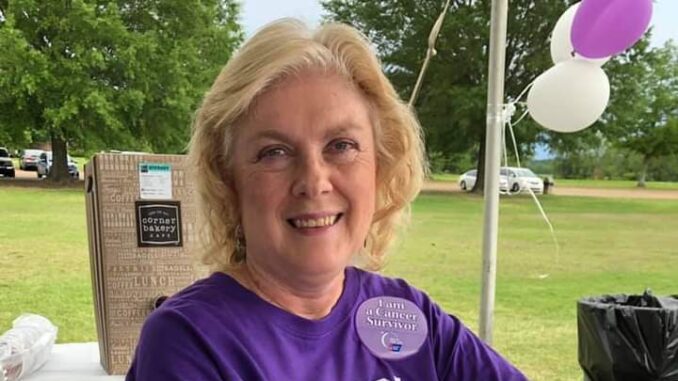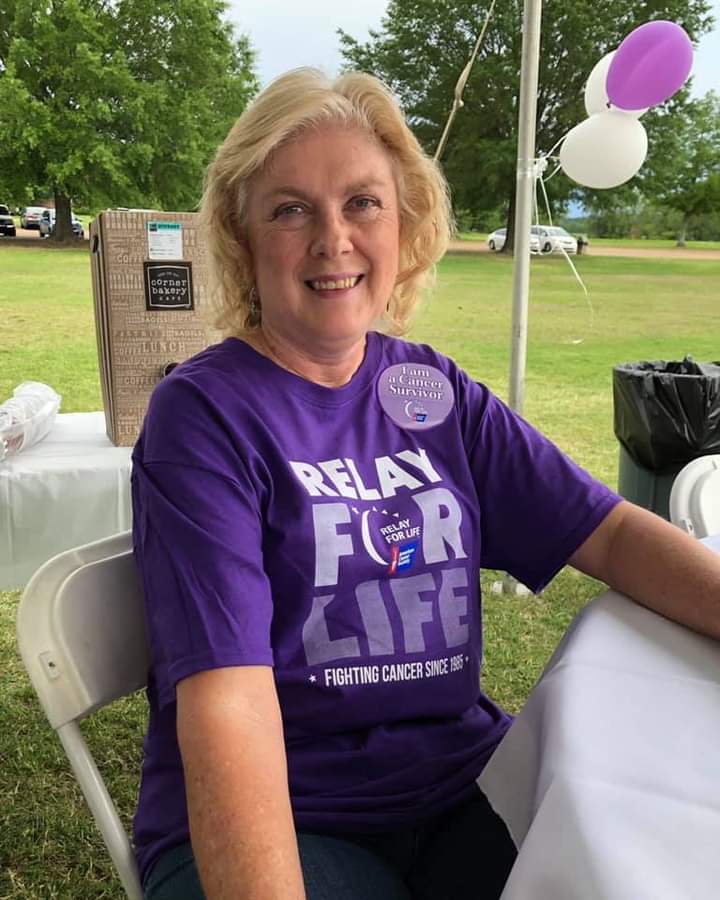
By Kenya Vardaman-Ramirev,
Mississippi Link Intern – JSU Journalism Student,
Patr

ick Swayze endeared us to him in the classic movie, Dirty Dancing – melting every family’s heart with every swing of his hips. We were all awash in empathy for him when he again appeared before us, slight and frail, ravaged in illness, yet still fighting. Cancer destroys those in its path – from close family to dear friends, even beloved celebrities. Chadwick Boseman, another of our favorites, was recently taken and we are still left with a wealth of award winning work, yet moving and reminding us.
Cancer is hated. Cancer is an ineradicable evil that menaces masses. The hashtag, #cancerSucks, returns a collection of social media content that spins round a painful panorama of the affected. It is estimated that, each year, more than a million people are diagnosed with cancer in the United States.
Cancer is cruel. But, breast cancer is most cruel for its ability to leave children motherless. Compared to the national average, Mississippi’s breast cancer mortality rate is the second highest in America, with 429 women succumbing to the disease, annually. But, according to the Mississippi Comprehensive Cancer Control State Plan 2018 – 2022: “As a result of risk reduction, education, early detection advances and cutting-edge treatments from research, cancer rates are declining for the first time in history.”
There are more than 3.8 million breast cancer survivors in the United States. And, the inspiring stories of survival abound.
Linda Letson, a BellSouth Telecommunications retiree, with three children, is also a 12-year breast cancer survivor. Before her finding, Letson, a blonde beauty with long and curly locks, sat in a call center of sales people, building rapport and being of excellent service on each customer call. Then, one day, she gingerly fingered a suspicious mass in the fatty tissue of her breast and her routine would forever be changed. Letson is rooted in her memory of that day and reminisces: “I found a lump in my right breast in January, 2008. On February 4, 2008, I was diagnosed with Triple Negative breast cancer. Triple Negative is an aggressive subtype of breast cancer that isn’t hormone driven and doesn’t respond to hormone therapies. The words, ‘It is cancer,’ shocked me. The next two weeks were a blur to me – while I had a CAT scan, bone scan and a port put in for chemo. I was very fortunate that my cancer hadn’t spread outside my breast. I had four chemo treatments, two weeks apart. After the second treatment, my hair started falling out. So, I shaved my head. It seems vain now, but I had very long hair. And, I was upset about losing it. At the time, my hair felt like the only thing that I had any control over. I got a wig, but I didn’t wear it much. Not having any hair saved me a lot of money on shampoo and styling products. It definitely saved me a lot of time when I had to get ready to go somewhere. I had a mastectomy with immediate reconstruction April 29, 2008. In June, 2008, I started chemo again and had four more treatments with a different chemo. Throughout my cancer journey, I have been determined that cancer wouldn’t stop me from doing what I wanted to do. In March 2008, I chaperoned a school band trip to Disney World that I had already planned to do. I don’t recommend going on a school trip with a bunch of kids, but it was fun and I managed to do it. I also continued to work with a young horse that I was training. I was riding him, one evening, when he got spooked. When he turned around suddenly, I hit a tree and fell off. I was knocked unconscious and had a concussion. I also broke my shoulder, collarbone, tailbone, and 11 ribs. That was painful. After I healed from that accident, I had my final reconstruction surgery in September, 2008. At first, I saw my oncologist every three months, then every six months. And, now, I have graduated to once a year follow-up visits. So far, I am still cancer-free. Starting in 2009, I have attended the Susan G. Komen Race for the Cure every year. And, I also attend my local Relay for Life events, as a cancer survivor. I look at life differently now and I am thankful, every morning, when I wake up. God has truly blessed me. I had an outstanding team of doctors. It has been a hard journey, sometimes, but my faith in God and my ability to laugh has gotten me through everything.”
The implementation of The Mississippi Comprehensive Cancer Control State Plan 2018-2022 will continue the telling of breast cancer survival stories like Letson’s. This plan emphasizes risk reduction, education, early detection and new and innovative treatment to further force down the breast cancer rate in Mississippi. Women of greater risk for breast cancer include: women over the age of 50; women with a family history of breast cancer; women without children or those who start families after age 30; women who have had cancer in one breast; and overweight women. According to the American Cancer Society, women – in the aforementioned categories – can reduce breast cancer risk by staying active and at a healthy weight, as well as avoiding or limiting alcohol. Pregnant mothers can breastfeed to reduce risk. There are even medicines that can keep the odds of staying “breast cancer free” in one’s favor. Education and early detection is also possible with research and regularly scheduled mammograms.
The American Cancer Society provide reports that present the latest breast cancer research and detail the allocation of funds earmarked in eradicating breast cancer worldwide. Furthermore, technological advancement is aggressively pushing forward a cure for breast cancer. A new treatment, Intraoperative Radiation Therapy, which exposes the breast cancer tumor to radiation during surgery, is a premier radiation therapy offered by Vision RT. And, the drug, T-DM1, has just been approved, by the USDA, for use in combating breast cancer.
The year 2020 has been a solar oscillation of political insurrection and pandemic infection, but it has also been one of great progress. Cancer levels are at an all-time low and we are closer to a cure. With the faith of breast cancer survivors, like Letson, and the new and innovative measures and treatments set forth by national agencies and organizations, we have more hope for a cancer-free future.

Be the first to comment